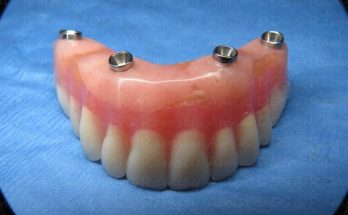Several factors like age, genetics, diet, underlying health conditions, and accidents can damage a tooth or even knock it out. A study even found that over 120 million American adults are missing at least one tooth. However, modern dentistry can provide you with several restorative solutions to restore the appearance and functionality of a damaged or missing tooth.
If you are in Riverside County, a professional restorative dentist in Hemet, CA, can provide you with solutions to regain confidence in your smile and improve your oral health.
Who needs restorative dentistry?
Restorative dentistry focuses on repairing or replacing a damaged, decayed, or missing tooth with an aim to improve functionality and oral health. Restorative dentistry can also reinstate the appearance and feel of a missing tooth and significantly enhance your confidence.
However, a person may need restorative dentistry solutions due to one or more of the following reasons.
- If you have a damaged or decayed tooth and require a solution that can mimic the looks and functions of a natural tooth.
- If you have lost a tooth due to an accident or gum disease and require an artificial tooth.
- If you have misaligned teeth and need to shift them to their ideal positions.
- If you are facing an oral disease that is affecting your tooth, its roots, and the bone structure supporting it.
- If you have been in an accident that chipped or cracked your tooth.
Common restorative dentistry procedures
Although restorative dentistry covers several dental procedures to help patients repair or replace their damaged or missing teeth, the following ones are the most common of them all.
- Dental filling: Dental infections, bacteria, and medical conditions like teeth grinding can lead to erosion of your tooth enamel and cause holes in the tooth, which are also known as cavities. Dentists use tooth-colored composite material to fill the cavities and reduce the risk of further damage.
- Inlays and onlays: Inlays and onlays are used when the dental cavities are big in size but not big enough for a dental crown. Inlays fill the small area between the cusps, while onlays cover at least one entire cusp.
- Dental crowns: A dental crown is a cap usually made of ceramic or porcelain material that sits over a tooth with a large cavity or significant damage due to an accident. The dentist usually removes some enamel from the affected tooth so that the crown sits perfectly over it.
- Bridges: A dental bridge can replace a single or an entire row of missing teeth by using a row of artificial teeth that is bonded to shaved-down natural teeth on one or both ends using crowns.
- Dentures: A denture is a prosthetic solution to replace an entire arch of the missing teeth. A partial denture replaces several missing teeth, while a full denture replaces all the missing teeth in an arch. While dentures are easily removable, implant-supported dentures provide more flexibility.
- Dental implants: Dental implants are artificial dental roots that act as anchors for prosthetic dental solutions. Dental implants are usually made using titanium and placed in the jaw bone through a surgical procedure.

Risks involved with restorative dentistry
Although restorative dentistry is regarded as a safe procedure, few patients may experience the following common side effects.
- Pain, discomfort, and increased sensitivity after the procedure may last for a few days.
- Some may experience allergic reactions or infections.
- If not performed by a professional dentist, the restoration may become loose or get chipped.
- Sometimes, the dental filling can break down.
- Improper fitment of restoration can cause plaque and lead to tooth decay.
Final takeaway
Restorative dentistry can significantly improve your oral health while also enhancing the appearance and functionality of teeth. Moreover, restorative dentistry can protect your gums and jaw bones to reduce health risks like stroke and heart disease.




